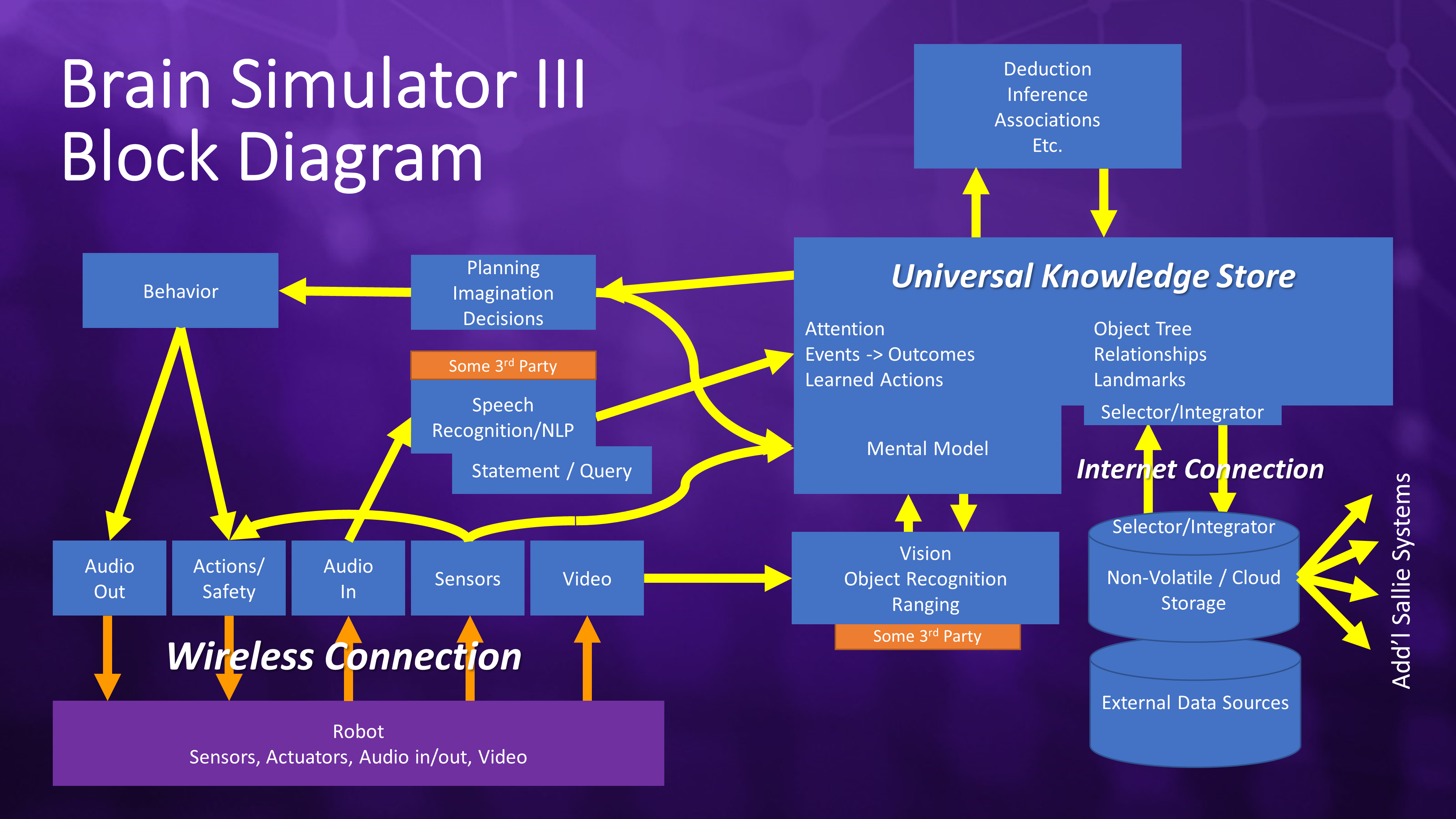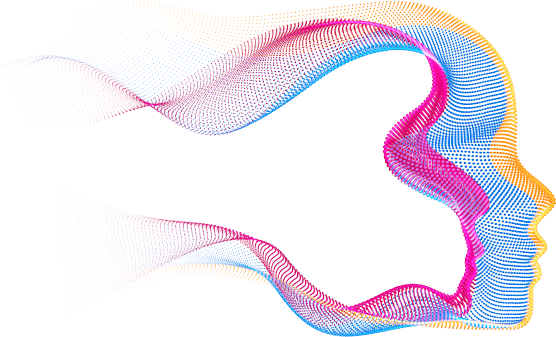Project Now Available on GitHub!
GitHub Repository UKS Documentation Intro Video Pt 1 Intro Video Pt 2
New! Discord Server! Click Here
Join the conversation on the Brain Simulator 3 Discord server. Here we brainstorm approaches to adding common sense to AI, discuss development of the brain simulator, and in general continue the discussions from our online meetings. We have channels related to topics such as vision, language, knowledge representation, and more.
An end-to-end Graph-Based AI laboratory.
Focused on the Universal Knowledge Store (UKS) which is a high-performance relational knowledge system representing our best approach to creating common sense. The UKS may be a roadmap for the way large portions of the human brain work.
Brain Simulator III is intended to create an end-to-end system with modules for vision, hearing, robotic control, learning, internal modeling, and even planning, imagination, and forethought. The incremental development strategy is creating the simplest ideas first.
Much of Intelligence relates to interaction with the real world as well as verbal and factual comprehension. Brain Simulator III development is centered on adding Common Sense to a robotic/artificial entity called “Sallie.” Play the video to learn more and see Sallie in action. This shows many features which have been developed but still need to migrate to the GitHub Repository. Your help is needed to continue this migration.
Block diagram of the Brain Simulator III featuring the Universal Knowledge Store (UKS).


Block diagram of Sallie’s simulated world and how the UKS can implement facets of Common Sense.



